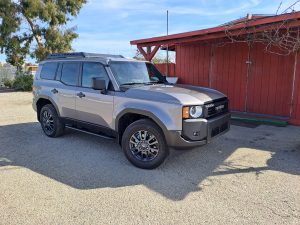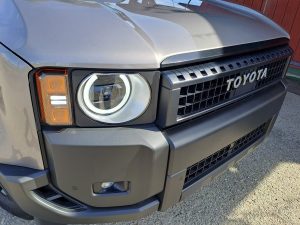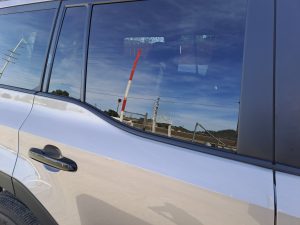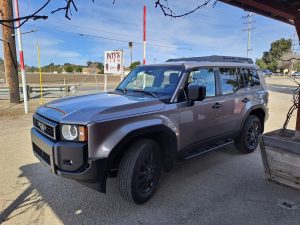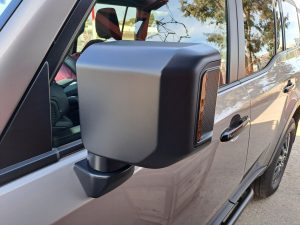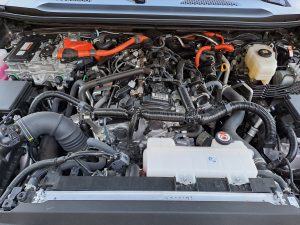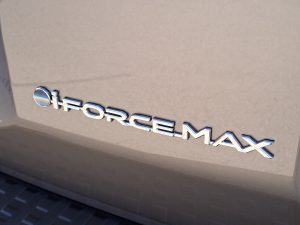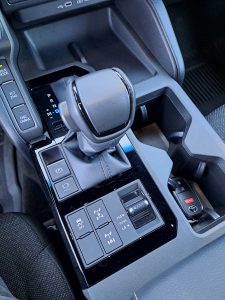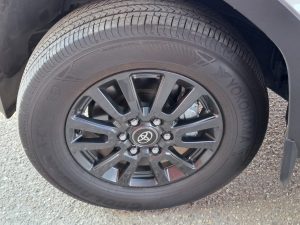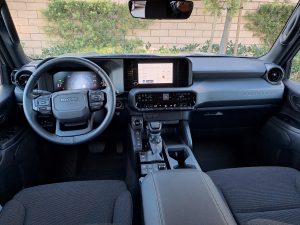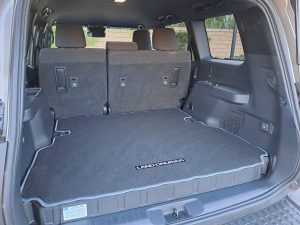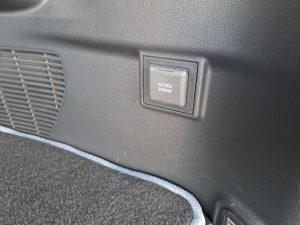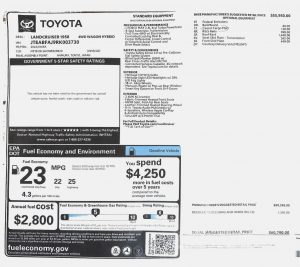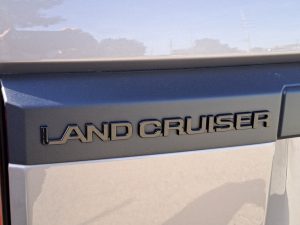Click on any photo or the window sticker to see them full screen in high resolution.
We all remember the Toyota Land Cruiser, right? Well, yes, but which one? Over the decades there have been several generations and body configurations of this early SUV pioneer. Some of them were truer to the original Land Cruiser formula, some less so by taking the nameplate in different, and arguably more marketable configurations. No matter, with a recent refresh of several Toyota and Lexus SUV/truck platform architectures, Toyota (wisely) decided to give the ‘Cruiser another swing.
The new for ’24 piece is a mid-to-full sized 5-door SUV on a genuine truck chassis, offered in a variety of model levels, and ditto powertrains. No sissy full-time car based all-wheel-drive here; a real Land Cruiser is a 4×4, and can go dang near anywhere. My tester was the “1958” model, which is absolutely the one I recommend, which dresses the design with some nicely homage (or retro) styling touches that tie it to original Cruisers. The headlights, even though fully modern hi-powered light clusters, have an appealing roundish look to them, and the grille also recalls that of the early, 2-door FJ40s. Theirs a neat little bodyline swale where the passenger door windows meet up with the far back side windows, that breaks up the overall blockiness, and differentiates this from a couple of Land Rover models, a Rivian, or a Hummer.
Some of the pundits have griped that the new Cruiser shares too much of its black metal underpinnings with other Toyota and Lexus models — to that I say just sush yourselves. In the modern age of production and development processes, needs, and costs, Toyota just can’t justify the investment to tool up absolutely 100% bespoke “black metal” stampings for every single model (only perhaps, Ferrari, can do this). There must be some economies of scale in order to bring specialty models to reality and the market. Do you, as a consumer, really care if your Land Cruiser’s transmission hump is shared with a Lexus or a Toyota truck? Or the throttle linkage and the battery cables? I didn’t think so.
When I first learned the specs of this I-Force MAX 2.4-Liter 4-cylinder Turbo hybrid powertrain, I wasn’t intially enthused. Although on paper, the numbers appear strong: 326 horsepower, 465 Pounds-feet torque, but the idea of a four-banger in a 5000-pound truck, on first run, just rang wrong in my ear. Then I thought: “OK, turbo for high end HP, hybrid for torque and fuel econ, might just work.
And then I drove it and man does it work. This powertrain is a gem, especially as paired with the 8-speeed automatic transmission. This very intelligent transmission offers a gear ratio for every occasion, and nicely modulates the engine’s power curves with the hybrid support on the lower end plus the turbo for mid and upper ranges. And all of the 4-wheel drive modes and actuations are done by switchgear on the console, and the powertrain’s linear throttle modulation makes it easy to control in delicate off-road situations. And yes, it’s got plenty climbing power.
I love the fact that this trim level dispenses with the fake (or real) wood trim, leather seats, and other fancy stuff; which again sells the truck’s OG theme, yet the cabin also has all the “mod cons” with a superb infotainment package, easy pairing, and power everything. Its roomy, comfortable, and has great visibility in all directions from any seat. The cargo area is large and flat.
And overall it’s a joy to drive too; plenty of power, linear steering, firm yet smooth ride, quiet, minimal wind noise, and all the things. Fit, finish, and quality are high. It’s not a cheap rig, but the value message is clear and strong; it’s a solid, worthwhile piece of what you get for what you pay; if I were in this market, I’d buy one with my own money. And if you want a new gen Land Cruiser with more conventional naturally aspirated powertrains, and fancier interior trim they offer that too.
For a solid, wonderful rig that’ll do it all for the active user or family, look no farther than 1958.


